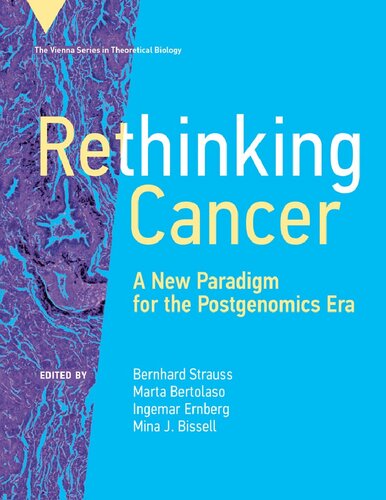博文
读书笔记:《重新思考癌症:后基因组学时代的新范式》 Rethinking Cancer
|
Rethinking Cancer: A New Paradigm for the Postgenomics Era

The Cell Attractor Concept as a Tool to Advance Our Understanding of Cancer
by Ingemar Ernberg
“Who/what makes decisions in the cell?” or rather, “How are decisions made in a cell?”
谁在指挥着细胞的行为?
Can DNA Specify a Cell Type?
The Role of DNA Is Not to Program Cells?
The enigma of how the same genome shared by approximately ten trillion cells in a human body can give rise to the few hundred widely divergent cell phenotypes with their specific functions that we can observe.
The different cell types of a multicellular organism carry identical genomic information but execute widely divergent functions, such as electric signaling, contraction, mobility, laying down the skeleton, defense against invading organisms and molecules, translating photons into “meaningful” signals, or protein production as required for the release of enzymes, hormones, or antibodies. How can the individual organism’s single genome operate in so many widely divergent contexts?
We do not understand who decides in the cell and how decisions are made, for instance, the decision to become a neuron, a Blymphocyte, a retinal-rod cell, a muscle cell, or an osteoblast. Without having solved this problem, we must admit that we are still missing a major piece in understanding how a cell “works.”
In such a world of intracellular exceptional complexity, what is then the role of DNA if it is not the programing of cellular functions? It is nevertheless certainly very important. It provides the boundaries for the possibilities of functional expression. It is an important part of the intracellular network and the source of information in building new protein molecules. It also functions as a vital source memory for new molecules when the cell “needs” a new function over the course of evolution. DNA, so to speak, fixes and stores “memories” of evolutionary experiences for future generations.
Cancer as a Reversion to an Ancestral Phenotype
by Kimberly J. Bussey and Paul C. W. Davies
癌症是一种返祖现象:多细胞生物的细胞中恢复到祖先的单细胞行为?
What is cancer? This is a fundamental question that still lacks an adequate answer. Cancers or cancer-like phenomena are found across the tree of life in multicellular organisms, suggesting that it is deeply embedded in the nature of multicellular life and has deep evolutionary roots.
Although it is now clear from a large body of evidence that the current genome/mutation-centered paradigm is not sufficient to explain the well-established behaviors of tumors, as well as tumor microenvironments and overall patient health, novel conceptual frameworks are still lacking.
We propose here to reconceptualize cancer as a kind of atavism, in this case the reversion to ancestral single-cell behaviors in cells of multicellular organisms, perhaps representing a speciation event.
The atavism theory postulates that cancer is the reversion to ancestral single-cell behaviors in cells of multicellular organisms, possibly representing a speciation event.
In this view, cancer is not the result of the acquisition of hallmarks of cancer cell behaviors via the accumulation of genetic modifications at the DNA level. Rather, the hallmarks of cancer result from redeploying, or reawakening, single-cell biology upon exposure to certain stress factors in cells that have evolved to be part of a multicellular organism. Once a cell shows cancer hallmark behavior, its genome as a whole is no longer wired as it would be in normal development and tissue maintenance, but rather in a way that supports single-cell survival.
https://blog.sciencenet.cn/blog-446272-1346745.html
上一篇:不要迷信影响因子 ...where the impact is a FACT, not a factor!
下一篇:《嘉陵夜跑》 一